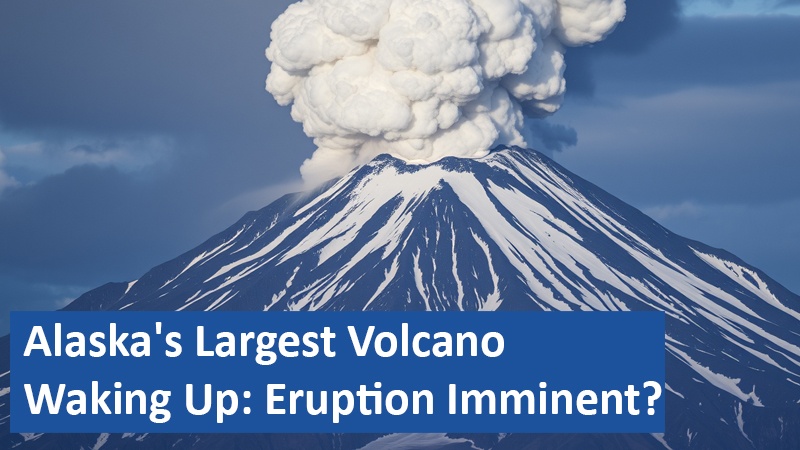
Mount Spurr, a towering snow-capped stratovolcano in Alaska, has long been a source of scientific intrigue, but recent events have sparked serious concerns. The Alaska Volcano Observatory (AVO) has been closely monitoring an increase in seismic activity around the volcano since April 2024. This earthquake surge suggests that the volcano may be gearing up for another eruption.
Now exclusively try Amazon Prime and Prime Video free for 30 days!
Seismic Shift
Sitting just 77 miles (124 kilometers) from Anchorage, Mount Spurr’s volatile nature puts both the local population and infrastructure at risk, particularly if a large eruption were to occur. Scientists are currently warning of a 50-50 chance that an eruption will take place in the near future. Since the beginning of 2024, Mount Spurr has been experiencing a higher-than-normal number of earthquakes, an unsettling sign of potential volcanic activity beneath the surface.
Crater Peak
The surge in seismic activity has intensified in recent months. The tremors, which were initially concentrated near the mountain’s peak, have shifted two miles (3 kilometers) down the slope, closer to a side vent known as Crater Peak. This vent, which has previously erupted in 1992 and 1953, is once again becoming the focal point of activity, and experts are now on high alert. The seismic shift to Crater Peak signals a potential change in the volcanic dynamics of the mountain.
Pyroclastic Flows
If an eruption were to occur, the consequences could be severe. Pyroclastic flows, which are fast-moving avalanches of hot gas, ash, and rock, could surge down the volcano’s slopes at speeds of over 200 mph (320 km/h). These flows would destroy everything in their path and could travel great distances from the vent. Additionally, melting snow and ice from the volcano could mix with volcanic debris to create mudflows known as lahars, which are highly destructive and can cause widespread flooding.
Airport Shutdowns
The biggest concern would be the impact on air travel and local infrastructure. In 1992, an eruption from Crater Peak led to the shutdown of Anchorage’s airport and left the city covered in 0.1 inches (3 millimeters) of ash. Given the increase in air traffic in the region since then, any similar event could have far more significant consequences for air travel today. A large ash cloud could also affect flights that traverse Alaska as they make their way between North America and Asia, potentially causing major disruptions to global air traffic. Even with all the earthquake activity, scientists cannot be certain if an explosion will ever occur.
Even with monitoring, the volcano could erupt at any moment. As scientists continue to analyze the seismic data, what more can be done to protect the local community. What will happen to Anchorage and its surrounding area.
How can Alaska residents best prepare for a potential volcanic eruption? And what long-term impacts would such an eruption have on the region’s environment and economy? Are you afraid of natural disasters? Share your thoughts in the comments.
Based on content from www.dailygalaxy.com and own research.